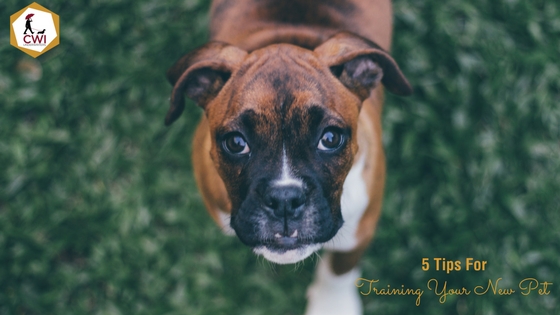Background
As you know we’ve been working with dachshunds since mid-last year. As a foster dad, I’ve learned a lot when it comes to training a new pet. From 1 year-old to 10-year old, I’ve had the joy of being able to semi-train our fosters at least for a while before they meet their families. So today we’ll discuss some real-world applications I’ve learned in the last six months and how to fix some mistakes or undesirable learned behaviors.
Short Sessions
Training sessions are mentally exhausting for a new dog, especially puppies. So when it comes to a training session try and keep it short. Especially when teaching them tricks. Small breaks are effective because they won’t test your patience and they’ll keep your puppy interested. Have you tried learning a new skill? While it’s something you are willing to try to learn for your benefit, it can still be stressful at times and you just need to break away.
The tone of your voice is very important, during training your tone should be calm and assertive. It’s imperative the puppy sees you as the leader of the pack, or an alpha. For larger breeds, this is essential as they grow.
Treats. Are. Key. Rewards. Although, treats are an effective tool in training it may not be the only way to motivate your pup. Petting and belly rubs maybe all the positive reinforcement needed.
Crating
The sooner your new pet understands where their space is the better. This can easily be done with a crate. Fill the crate with a comfortable cushion and their favorite toy. It may help to place one of your old t-shirts in the crate as well, your scent will make the space inviting. Another way to help your puppy love their crate is to leave the door open when you are home. Your pup will eventually go into the crate on its own when they want to rest. Baby gates can also be used if you are using a designated space for them. They serve to block off restricted areas of the house and help to teach your puppy what areas are off limits.
Be Consistent
Puppies want nothing more than to please you, they just need to know how. The only way to do this is by being consistent, using the same words or phrases when training is key. If you are potty training using “Pee-pee” or “Potty” you can’t expect to get the same results when asking “wanna go to the bathroom,’ in most cases your pup will be confused. The same goes for meal times, when potty training keep meal times consistent so you’ll know when it’s time to eliminate avoiding accidents.
Leashes
Leashing your pet seems pretty simple, right? Keep them on a leash for walks. The kind of leash used can make a huge difference in your leash training. Using retractable leashes is a huge no-no, they can snap and they actually encourage dogs to pull. Also, harnesses are great! If you can purchase one that connects to the leash in front of the chest, even better. This helps with control and will discourage the pup from pulling.
Bust Bad Habits
Chewing, barking, and jumping are a few major problems that should be tamed as soon as possible. Chewing is usually a problem with most pups especially when they are teething, but this can also result from separation anxiety. Try a bitter apple spray that can be found in most pet stores. Simply spray it on the surface or items and your pup will stay away. Another effective resolution is to buy a variety of textured toys when the pup starts to chew on your shoes or papers, replace the item with a textured toy to help them understand what is acceptable to chew through. My personal favorite is a Kong toy filled with peanut butter, freeze it for a few hours to soothe their gums.
To handle barking, be sure to take out your pet at first bark assuring them that everything is okay to calm anxiety. Bells at the door work well too because you can train your pet to ring the bell when they need to be walked. Jumping is heartwarming when they’re small, who wouldn’t want to be bombarded with love every time you get home? When your puppy is now a 95-pound Boxer the jumping is no longer cute it’s more like a HIIT mini-session. To solve this problem, simply ignore your pet while jumping. (I know, easier said than done.) Once they are calm, you greet them, after a few days they will understand.
Hopefully, these tips help you and your family with your new four-legged family member. Remember, consistency is key! Although, it may be hard to be disciplined during these precious first few months, it will save you lots of frustration once these loyal friends grasp the idea.



